Library of Congress

11,599,606 books in large type and raised characters, incunabula (books printed before 1501), monographs and serials, music, bound newspapers, pamphlets, technical reports, and other printed material, and 109,029,796 items in the nonclassified (special) collections The Library of Congress is the research library of the United States Congress and is the oldest federal cultural institution in the United States. Located in three buildings in Washington, D.C., it is the largest library in the world by shelf space and holds the largest number of books.[2][3] The head of the Library is the Librarian of Congress, currently James H. Billington. The Library of Congress was established by Congress in 1800, and was housed in the United States Capitol for most of the 19th century. After much of the original collection had been destroyed during the War of 1812, Thomas Jefferson sold 6487 books to the library, his entire personal library, in 1815[4][5]. After a period of decline during the mid-19th century the Library of Congress began to grow rapidly in both size and importance after the American Civil War, culminating in the construction of a separate library building and the transference of all copyright deposit holdings to the Library. During the rapid expansion of the 20th century the Library of Congress assumed a preeminent public role, becoming a "library of last resort" and expanding its mission for the benefit of scholars and the American people. The Library's primary mission is researching inquiries made by members of Congress through the Congressional Research Service; although it is open to the public, only legislators, Supreme Court justices and other high-ranking government officials may check out books. Through the United States Copyright Office, the Library of Congress also receives copies of every book, pamphlet, map, print, and piece of music registered in the United States. As the de facto national library, the Library of Congress promotes literacy and American literature through projects such as the American Folklife Center, American Memory, Center for the Book and Poet Laureate. The Library of Congress was established on April 24, 1800, when President John Adams signed an Act of Congress providing for the transfer of the seat of government from Philadelphia to the new capital city of Washington. Part of the legislation appropriated $5,000 "for the purchase of such books as may be necessary for the use of Congress ..., and for fitting up a suitable apartment for containing them...." Books were ordered from London and the collection, consisting of 740 books and 30 maps, was housed in the new Capitol.[6] Although the collection covered a variety of topics, the bulk of the materials were legal in nature, reflecting Congress' role as a maker of laws. Thomas Jefferson played an important role in the Library's early formation, signing into law on January 26, 1802 the first law establishing the structure of the Library of Congress. The law established the presidentially appointed post of Librarian of Congress and a Joint Committee on the Library to regulate and oversee the Library, as well as giving the president and vice president the ability to borrow books.[6] The Library of Congress was destroyed in August 1814, when invading British troops set fire to the Capitol building and the small library of 3,000 volumes within.[6] Within a month, former President Jefferson offered his personal library[7][8] as a replacement. Jefferson had spent 50 years accumulating a wide variety of books, including ones in foreign languages and volumes of philosophy, science, literature, and other topics not normally viewed as part of a legislative library, such as cookbooks, writing that, "I do not know that it contains any branch of science which Congress would wish to exclude from their collection; there is, in fact, no subject to which a Member of Congress may not have occasion to refer." In January 1815, Congress accepted Jefferson's offer, appropriating $23,950 for his 6,487 books.[6] The antebellum period was difficult for the Library. During the 1850s the Smithsonian Institution's librarian Charles Coffin Jewett aggressively tried to move that organization towards becoming the United States' national library. His efforts were blocked by the Smithsonian's Secretary Joseph Henry, who advocated a focus on scientific research and publication and favored the Library of Congress' development into the national library. Henry's dismissal of Jewett in July 1854 ended the Smithsonian's attempts to become the national library, and in 1866 Henry transferred the Smithsonian's forty thousand-volume library to the Library of Congress.[6] On December 24, 1851 the largest fire in the Library's history destroyed 35,000 books, about two-thirds of the Library's 55,000 book collection, including two-thirds of Jefferson's original donation.[6] Congress in 1852 quickly appropriated $168,700 to replace the lost books but not for the acquisition of new materials. This marked the start of a conservative period in the Library's administration under Librarian John Silva Meehan and Joint Committee Chairman James A. Pearce, who worked to restrict the Library's activities.[6] In 1857, Congress transferred the Library's public document distribution activities to the Department of the Interior and its international book exchange program to the Department of State. The centralization of copyright offices into the United States Patent Office in 1859 ended the Library's thirteen year role as a depository of all copyrighted books and pamphlets. Abraham Lincoln's political appointment of John G. Stephenson as Librarian of Congress in 1861 further weakened the Library; Stephenson's focus was on non-library affairs, including service as a volunteer aide-de-camp at the battles of Chancellorsville and Gettysburg during the American Civil War. By the conclusion of the war, the Library of Congress had a staff of seven for a collection of eighty thousand volumes.[6] The Library of Congress reasserted itself during the latter half of the 19th century under Librarian Ainsworth Rand Spofford, who directed the Library from 1865 to 1897. Aided by an overall expansion of the federal government and a favorable political climate, Spofford built broad bipartisan support for the Library as a national library and a legislative resource, began comprehensively collecting Americana and American literature, and led the construction of a new building to house the Library, and transformed the Librarian of Congress position into one of strength and independence.[6] Between 1865 and 1870, Congress appropriated funds for the construction of the Thomas Jefferson Building, placed all copyright registration and deposit activities under the Library's control, and restored the Library's international book exchange. The Library also acquired the vast libraries of both the Smithsonian and historian Peter Force, strengthening its scientific and Americana collections significantly. By 1876, the Library of Congress had 300,000 volumes and was tied with Boston Public Library as the nation's largest library. When the Library moved from the Capitol building to its new headquarters in 1897, it had over 840,000 volumes, 40% of which had been acquired through copyright deposit.[6] A year before the Library's move to its new location, the Joint Library Committee held a session of hearings to assess the condition of the Library and plan for its future growth and possible reorganization. Spofford and six experts sent by the American Library Association, including future Librarian of Congress Herbert Putnam and Melvil Dewey of the New York State Library, testified before the committee that the Library should continue its expansion towards becoming a true national library.[6] Based on the hearings and with the assistance of Senators Justin Morrill of Vermont and Daniel Voorhees of Indiana, Congress more than doubled the Library's staff from 42 to 108 and established new administrative units for all aspects of the Library's collection. Congress also strengthened the office of Librarian of Congress to govern the Library and make staff appointments, as well as requiring Senate approval for presidential appointees to the position.[6] The Library of Congress, spurred by the 1897 reorganization, began to grow and develop more rapidly. Spofford's successor John Russell Young, though only in office for two years, overhauled the Library's bureaucracy, used his connections as a former diplomat to acquire more materials from around the world, and established the Library's first assistance programs for the blind and physically disabled.[6] Young's successor Herbert Putnam held the office for forty years from 1899 to 1939, entering into the position two years before the Library became the first in the United States to hold one million volumes.[6] Putnam focused his efforts on making the Library more accessible and useful for the public and for other libraries. He instituted the interlibrary loan service, transforming the Library of Congress into what he referred to as a "library of last resort".[9] Putnam also expanded Library access to "scientific investigators and duly qualified individuals" and began publishing primary sources for the benefit of scholars.[6] Putnam's tenure also saw increasing diversity in the Library's acquisitions. In 1903 he persuaded President Theodore Roosevelt to transfer by executive order the papers of the Founding Fathers from the State Department to the Library of Congress. Putnam expanded foreign acquisitions as well, including the 1904 purchase of a four-thousand volume library of Indica, the 1906 purchase of G. V. Yudin's eighty-thousand volume Russian library, the 1908 Schatz collection of early opera librettos, and the early 1930s purchase of the Russian Imperial Collection, consisting of 2,600 volumes from the library of the Romanov family on a variety of topics. Collections of Hebraica and Chinese and Japanese works were also acquired.[6] Congress even took the initiative to acquire materials for the Library in one occasion, when in 1929 Congressman Ross Collins of Mississippi successfully proposed the $1.5 million purchase of Otto Vollbehr's collection of incunabula, including one of four remaining perfect vellum copies of the Gutenberg Bible.[6]
do you like this author?
What readers are saying
What do you think? Write your own comment on this book!
write a commentWhat readers are saying
What do you think? Write your own comment on this author!
write a commentBook list
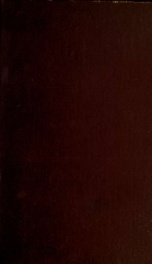
Preliminary check list of American almanacs, 1639-1800
Series:
Unknown
Year:
Unknown
Raiting:
3/5
26
Show more
add to favoritesadd In favorites

Report of the Librarian of Congress 1912
Series:
Unknown
Year:
Unknown
Raiting:
4/5
Title varies: 1904/05-1921/22, Report of the Librarian of Congress and Report of the Superintendent of the Library Buildings and Grounds 26 26
Show more
add to favoritesadd In favorites
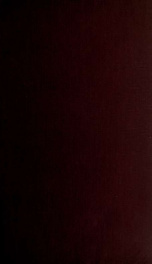
Report of the Librarian of Congress 1911
Series:
Unknown
Year:
Unknown
Raiting:
4/5
Title varies: 1904/05-1921/22, Report of the Librarian of Congress and Report of the Superintendent of the Library Buildings and Grounds 26 26
Show more
add to favoritesadd In favorites
Book list

Preliminary check list of American almanacs, 1639-1800
Series:
Unknown
Year:
Unknown
Raiting:
3/5
26
Show more
add to favoritesadd In favorites

Report of the Librarian of Congress 1912
Series:
Unknown
Year:
Unknown
Raiting:
4/5
Title varies: 1904/05-1921/22, Report of the Librarian of Congress and Report of the Superintendent of the Library Buildings and Grounds 26 26
Show more
add to favoritesadd In favorites

Report of the Librarian of Congress 1911
Series:
Unknown
Year:
Unknown
Raiting:
4/5
Title varies: 1904/05-1921/22, Report of the Librarian of Congress and Report of the Superintendent of the Library Buildings and Grounds 26 26
Show more
add to favoritesadd In favorites

Report of the Librarian of Congress 1910
Series:
Unknown
Year:
Unknown
Raiting:
4.5/5
Title varies: 1904/05-1921/22, Report of the Librarian of Congress and Report of the Superintendent of the Library Buildings and Grounds 26 26
Show more
add to favoritesadd In favorites
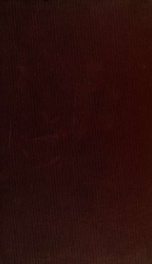
Report of the Librarian of Congress 1909
Series:
Unknown
Year:
Unknown
Raiting:
3/5
Title varies: 1904/05-1921/22, Report of the Librarian of Congress and Report of the Superintendent of the Library Buildings and Grounds 26 26
Show more
add to favoritesadd In favorites
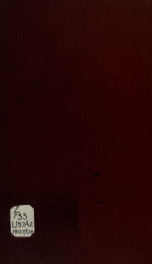
Report of the Librarian of Congress 1908
Series:
Unknown
Year:
Unknown
Raiting:
3/5
Title varies: 1904/05-1921/22, Report of the Librarian of Congress and Report of the Superintendent of the Library Buildings and Grounds 26 26
Show more
add to favoritesadd In favorites
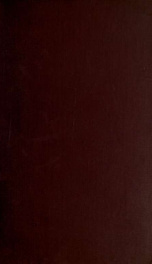
Report of the Librarian of Congress 1913
Series:
Unknown
Year:
Unknown
Raiting:
3.5/5
Title varies: 1904/05-1921/22, Report of the Librarian of Congress and Report of the Superintendent of the Library Buildings and Grounds 26 26
Show more
add to favoritesadd In favorites
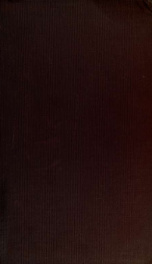
Report of the Librarian of Congress 1914
Series:
Unknown
Year:
Unknown
Raiting:
4.5/5
Title varies: 1904/05-1921/22, Report of the Librarian of Congress and Report of the Superintendent of the Library Buildings and Grounds 26 26
Show more
add to favoritesadd In favorites

Report of the Librarian of Congress 1915
Series:
Unknown
Year:
Unknown
Raiting:
4.5/5
Title varies: 1904/05-1921/22, Report of the Librarian of Congress and Report of the Superintendent of the Library Buildings and Grounds 26 26
Show more
add to favoritesadd In favorites
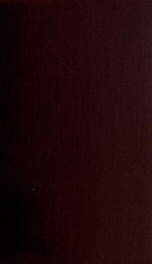
Report of the Librarian of Congress 1916
Series:
Unknown
Year:
Unknown
Raiting:
5/5
Title varies: 1904/05-1921/22, Report of the Librarian of Congress and Report of the Superintendent of the Library Buildings and Grounds 26 26
Show more
add to favoritesadd In favorites

Report of the Librarian of Congress 1903/04
Series:
Unknown
Year:
Unknown
Raiting:
3.5/5
Title varies: 1904/05-1921/22, Report of the Librarian of Congress and Report of the Superintendent of the Library Buildings and Grounds 26 26
Show more
add to favoritesadd In favorites

Report of the Librarian of Congress 1902/03
Series:
Unknown
Year:
Unknown
Raiting:
3/5
Title varies: 1904/05-1921/22, Report of the Librarian of Congress and Report of the Superintendent of the Library Buildings and Grounds 26 26
Show more
add to favoritesadd In favorites

Report of the Librarian of Congress 1901/02
Series:
Unknown
Year:
Unknown
Raiting:
3.5/5
Title varies: 1904/05-1921/22, Report of the Librarian of Congress and Report of the Superintendent of the Library Buildings and Grounds 26 26
Show more
add to favoritesadd In favorites

Report of the Librarian of Congress 1900/01
Series:
Unknown
Year:
Unknown
Raiting:
2.5/5
Title varies: 1904/05-1921/22, Report of the Librarian of Congress and Report of the Superintendent of the Library Buildings and Grounds 26 26
Show more
add to favoritesadd In favorites
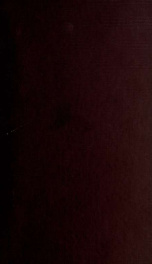
Report of the Librarian of Congress 1905
Series:
Unknown
Year:
Unknown
Raiting:
3/5
Title varies: 1904/05-1921/22, Report of the Librarian of Congress and Report of the Superintendent of the Library Buildings and Grounds 26 26
Show more
add to favoritesadd In favorites
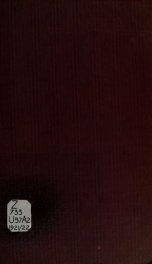
Report of the Librarian of Congress 1922
Series:
Unknown
Year:
Unknown
Raiting:
5/5
Title varies: 1904/05-1921/22, Report of the Librarian of Congress and Report of the Superintendent of the Library Buildings and Grounds 26 26
Show more
add to favoritesadd In favorites
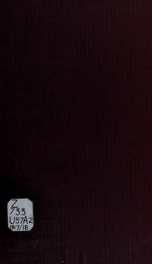
Report of the Librarian of Congress 1918
Series:
Unknown
Year:
Unknown
Raiting:
4.5/5
Title varies: 1904/05-1921/22, Report of the Librarian of Congress and Report of the Superintendent of the Library Buildings and Grounds 26 26
Show more
add to favoritesadd In favorites

Report of the Librarian of Congress 1907
Series:
Unknown
Year:
Unknown
Raiting:
4.5/5
Title varies: 1904/05-1921/22, Report of the Librarian of Congress and Report of the Superintendent of the Library Buildings and Grounds 26 26
Show more
add to favoritesadd In favorites
What readers are saying
What do you think? Write your own comment on this author!
write a commentif you like Library of Congress try:
readers also enjoyed
What readers are saying
What do you think? Write your own comment on this author!
write a commentGenre
if you like Library of Congress try:
readers also enjoyed
Do you want to read a book that interests you? It’s EASY!
Create an account and send a request for reading to other users on the Webpage of the book!

